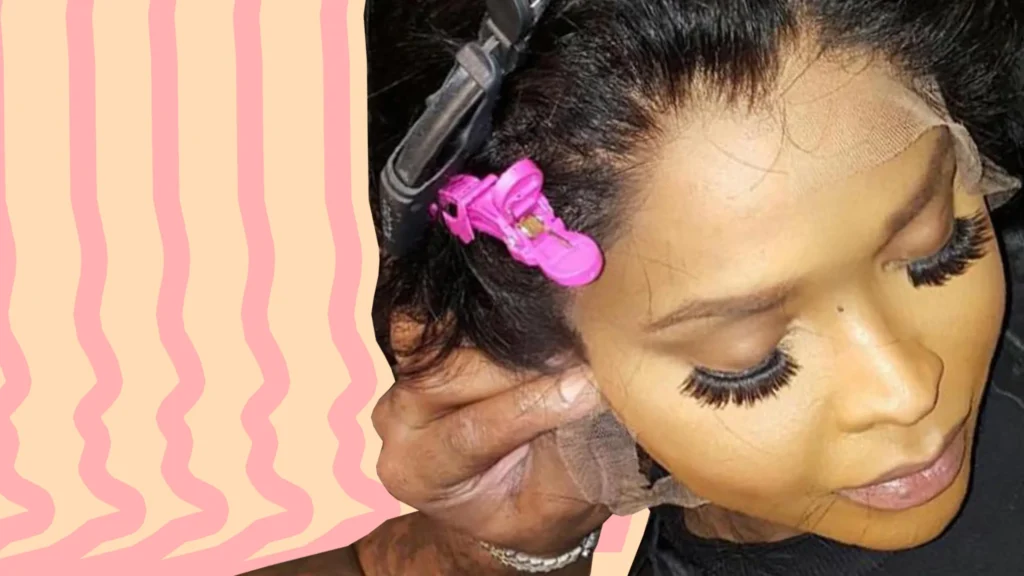Most people have limited knowledge about wigs. The first reaction to the mention of wigs for many is the low-cost products found in shopping malls, small shops, and street stalls that can be put on immediately. In reality, these are only the lowest-end wigs and are not comparable to high-end custom-made, handcrafted wigs. Currently, China’s wig industry is on the rise, supplying 80% of the world’s wigs, which are exported to Europe, America, Africa, South America, and other regions.
The production of custom wigs is a very intricate process, involving material selection, hair hooking, bleaching, and dyeing, among other meticulous steps. A custom-made wig requires a significant amount of time and labor to complete. Therefore, the notion that wigs are merely low-end goods sold on the streets is utterly incorrect! Today, we will explore the lesser-known aspects of wigs. They can be categorized by area into wig sets and wig pieces. Wig sets are worn entirely on the head, convenient to wear, secure, and cover a large area, suitable for a wide range of applications. Wig pieces can be custom-made into different shapes and sizes according to different needs, offering high flexibility, extreme realism, and good breathability. By production method, they can be divided into machine-woven hair and hand-tied hair. Machine-woven hair is mass-produced by machines, generally at a low cost, but the realism is not ideal, they are heavier, have poor breathability, can easily obstruct hair follicles, and are prone to tangling. Hand-tied hair is made purely by hand, with high realism, good breathability, comfortable wear, but at a higher price. By craftsmanship, they can be divided into machine-woven wigs, semi-machine woven and semi-hand-tied wigs (often called front lace wigs), full lace wigs, Jewish wigs (also known as hand-tied hairpieces), hair pieces, and MONO wigs. Hand-tied hairpieces are the most complex in craftsmanship among all wigs, expensive, mainly made from European and Mongolian hair. The hand-tied part is usually distributed on the top of the head, mainly composed of three layers of netting, with hair hooked on the middle lace, then passed through the top layer of the net to create the illusion of hair growing from the scalp. To ensure more comfortable wear, an additional layer of fabric is added underneath to cover the hair nodes of the middle hand-tied layer. MONO is a type of netting with a denser mesh and a slightly harder texture than lace, which can be used for the entire top of the head, parting lines, or hair whorls, offering a realistic wearing effect, with hair appearing as if it grows from the scalp. This is also a popular craftsmanship, but this type of netting has slightly worse breathability than lace netting. By material, they can be divided into synthetic fibers and real human hair. Synthetic wigs are made from synthetic fibers, with poor realism, causing itching when worn, and are prone to reactions with the scalp.Affordable and long-lasting styling effects. Wigs made from real human hair are crafted from processed, genuine human hair, offering high realism, resistance to tangling, and the ability to be permed, dyed, and styled, making it easy to change hairstyles. However, they are more expensive and may not hold the style as well.
Wigs can be categorized based on their use into doll hair, anime wigs, mannequins’ wigs, holiday wigs, women’s wigs, men’s wigs, and special industry wigs (such as wigs specifically needed for judges and the entertainment industry). Based on the type of netting, they can be divided into Swiss lace wigs, French lace wigs, MONO wigs, silk wigs, and PU wigs. There are also various combinations of wig netting, such as lace in the front and PU in the back. Functionally, wigs can be divided into full wigs, half wigs, and 3/4 wigs (also known as 7-part wigs). Toupees, the most common type of wig, cover a portion of the hair and are primarily used by individuals experiencing hair loss. They can be custom-designed according to the specific areas of hair loss for each person. Toupees come in various netting types, including lace, MONO, PU, silk, or combinations of these materials, and can also be customized. Hair extensions are mainly categorized into hair curtains, hair bundles, and clip-in hair. Accessories are generally variations of hair extensions and include bangs, ponytails, hair loops, and hair buns. Regardless of how wigs are classified, they are mainly used for the following purposes: 1) Hair styling, covering white hair, increasing hair volume, and mixed styling; 2) Compensating for hair loss and other physiological defects; 3) Beauty and hairdressing education; 4) Meeting the needs of special professions, such as the entertainment industry and judges.